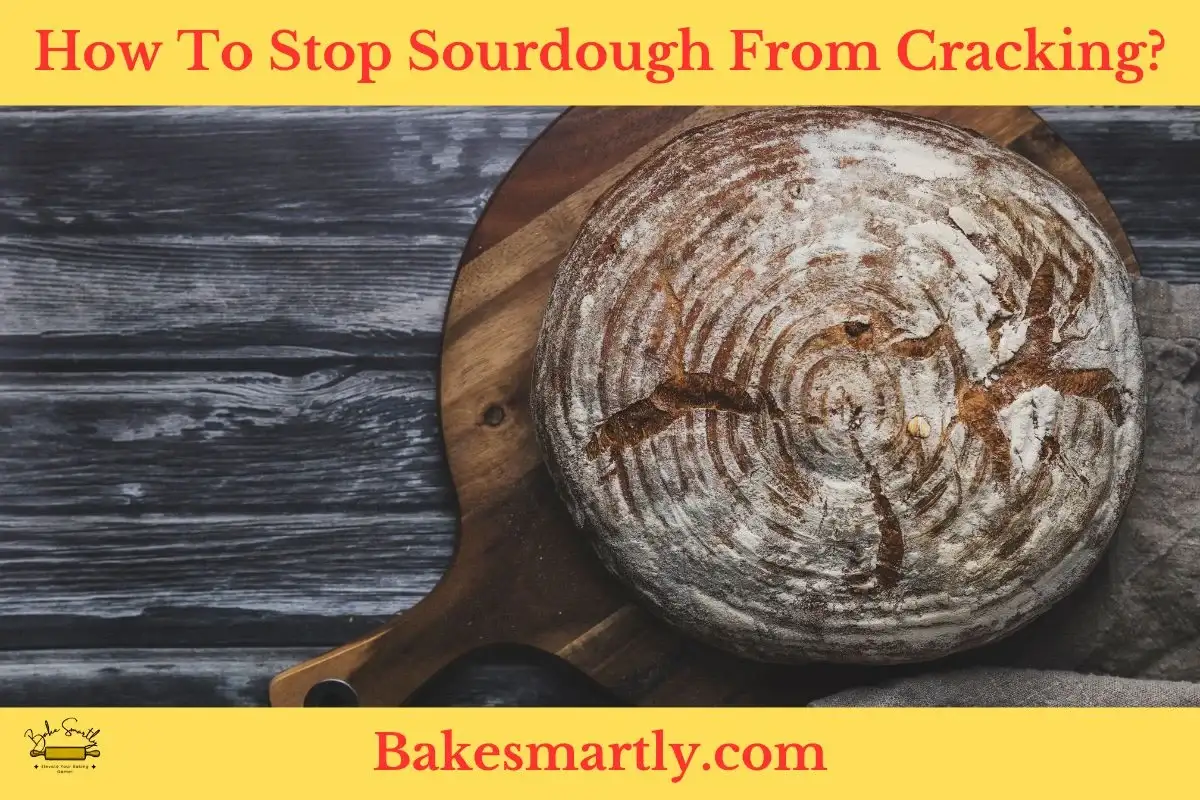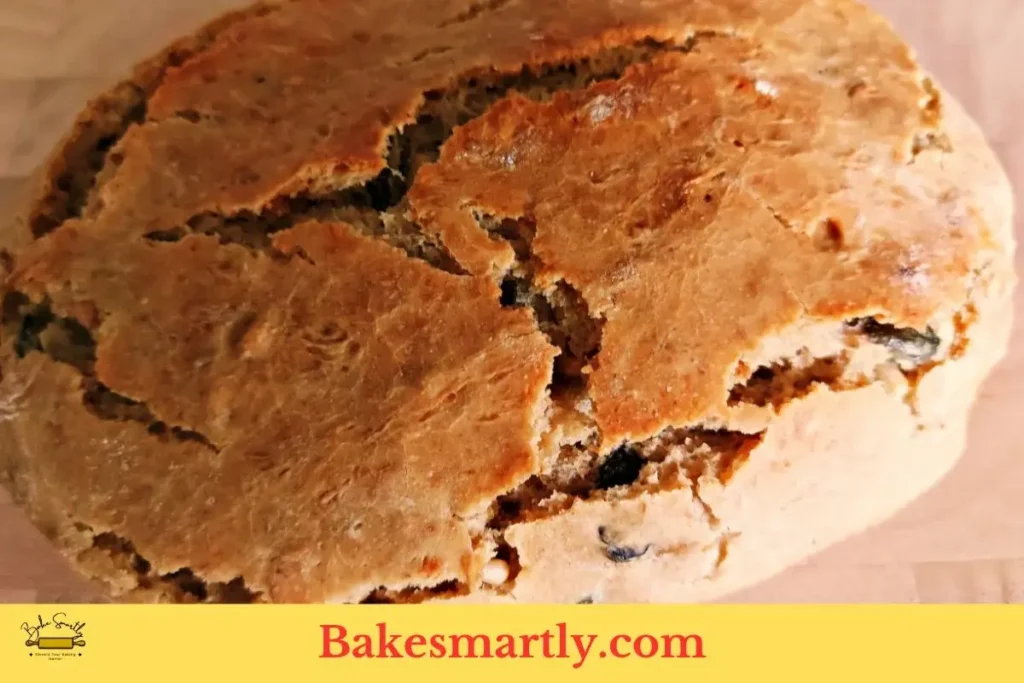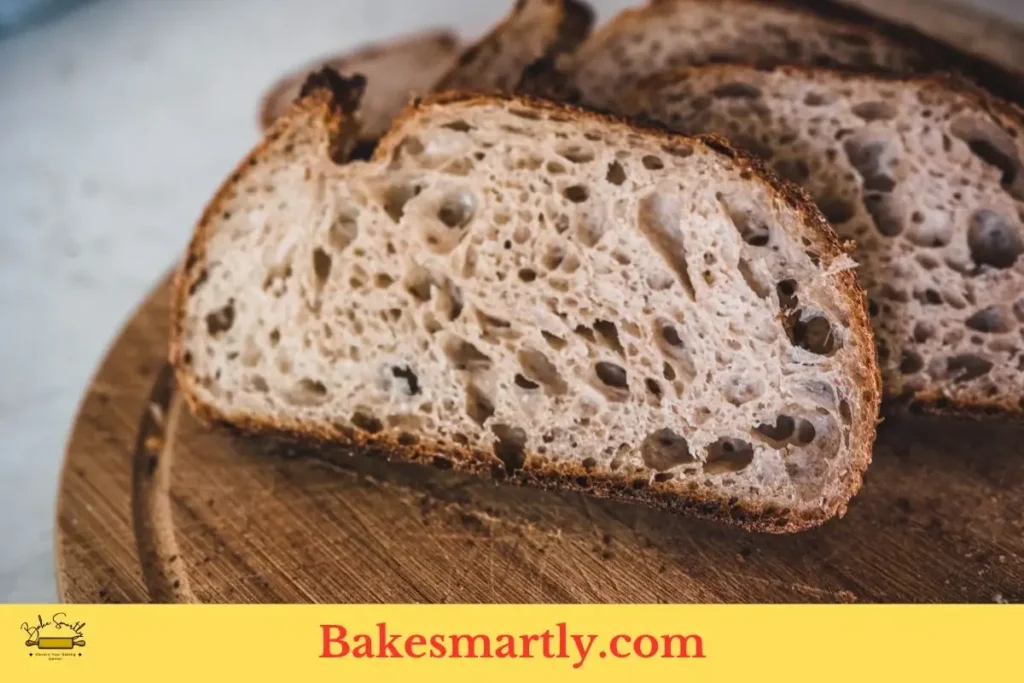
Sourdough bread, with its delicious tangy flavor and crisp crust, has gained immense popularity among baking enthusiasts. However, one common challenge many bakers face is the unsightly cracking of their sourdough loaves during the baking process.
In this article, we will explore the reasons behind sourdough cracking and provide practical solutions to help you achieve perfect, crack-free loaves.
Table of Contents
ToggleWhy Your Sourdough Bread Keeps Cracking | 6 Main Reasons
In this section, we will delve into the six main reasons why your sourdough bread keeps cracking, and more importantly, how to avoid this common pitfall.
1. Insufficient Hydration
One of the primary reasons for cracked sourdough bread is inadequate hydration. The dough should have the right balance of water and flour. If your dough is too dry, it won’t expand properly during fermentation and baking, leading to cracks. On the other hand, dough that’s too wet can lead to excessive spreading during proofing, resulting in a deflated loaf.
To combat this, you must carefully measure your ingredients and adjust the hydration levels accordingly. Remember that different flours may require varying amounts of water, so pay close attention to your dough’s consistency as you mix it.
2. Overproofing
Overproofing is another major contributor to sourdough bread cracks. During the final proofing stage, the dough ferments and develops gases, which cause it to rise. However, if you leave your dough to proof for too long, it can become overly fragile, making it prone to cracks.
To prevent overproofing, it’s essential to monitor your dough closely. Look for signs of readiness, such as a slight jiggle when you gently shake the container. If you push your finger into the dough, it should spring back slowly. If it springs back quickly, it’s underproofed; if it collapses or doesn’t spring back at all, it’s overproofed.

3. Inadequate Kneading or Folding
Inconsistent kneading or folding of the dough can also lead to cracks. Proper kneading or folding is crucial for developing gluten, which gives the dough its structure. If you skip this step or do it haphazardly, your dough might be weak and prone to cracking.
To avoid this, ensure you knead or fold the dough according to your chosen technique consistently. Whether you prefer traditional kneading or the more modern folding method, the key is to create a strong, elastic dough structure that can expand evenly during fermentation and baking.
4. Incorrect Oven Temperature
The temperature in your oven plays a significant role in preventing cracks in sourdough bread. If the oven is too hot or not hot enough, the dough may not expand properly, leading to cracks in the crust.
To address this issue, it’s crucial to preheat your oven adequately and use a reliable oven thermometer to confirm the temperature. Most sourdough recipes recommend baking at a high initial temperature, which helps the bread achieve a desirable oven spring and crust formation.
5. Suboptimal Steam Generation
Steam is vital for achieving that coveted sourdough crust. It helps the bread expand quickly in the initial stages of baking, allowing for a beautiful rise and a crack-free crust. If you don’t introduce enough steam into the oven or if the steam dissipates too quickly, the crust may set too soon, causing cracks as the dough tries to expand.
To address this issue, consider using methods like a preheated cast-iron skillet filled with water, a Dutch oven with a lid, or a dedicated steam injection system. These techniques help maintain the right level of humidity in the oven and promote even expansion of the bread.
6. Inadequate Scoring
Scoring the bread, or making shallow cuts on the surface, is a common practice in sourdough baking. It serves multiple purposes, including allowing the bread to expand more easily and creating an attractive pattern on the crust. If you score too shallow or too deep, or if your cuts are uneven, it can lead to irregular expansion and cracks in the loaf.
To avoid this, invest time in learning proper scoring techniques. A sharp, slightly angled blade and confident, swift cuts are key. Practice makes perfect, and you’ll find that your scoring skills improve with time.

How to Fix Sourdough Bread Cracks | Step by Step
It can be pretty disappointing to see your beautifully baked sourdough bread all cracked up, but here’s some good news – you can totally fix those cracks.
In this step-by-step guide, we’ll walk you through how to repair those cracks and save your loaf.
- Step 1: Check the Damage First things first, take a good look at your cracked sourdough bread. Figure out how bad the cracks are and where they are – are they on the top, sides, or bottom? Knowing where the cracks are will help you decide how to best repair them.
- Step 2: Get a Simple Solution Ready To fix those cracks, you’ll only need one thing: water. Fill a spray bottle with room-temperature water. Water works like glue to help patch up the cracks.
- Step 3: Rehydrate the Cracks With your spray bottle ready, lightly mist the cracked parts of your sourdough loaf. Be careful not to soak the bread; a fine mist is enough. The aim is to moisten the crust and make it a bit sticky.
- Step 4: Press the Cracks Together Now that the cracks are damp, gently use your fingers to push the cracked sections together. The moisture from the water will help the dough stick to itself. Don’t worry if the cracks don’t completely disappear at this point; you’re just trying to close them as much as possible.
- Step 5: Keep Baking After pressing the cracks together, put the bread back in the oven and keep baking. The heat will further seal the moistened dough, and the cracks should mend as the bread bakes.
- Step 6: Adjust the Baking Time Since you’re returning the bread to the oven, you might need to tweak the baking time a bit. Keep a close eye on your loaf to avoid over-baking. A general guideline is to bake for an extra 5-10 minutes, or until the bread has the crust color and texture you want.
- Step 7: Let It Cool and Slice Once your bread is done baking, take it out of the oven and let it cool on a wire rack. Slicing the bread when it’s still warm can lead to uneven slices and might not let the cracks fully mend.
- Step 8: Dig In! Now that your sourdough bread has cooled, it’s time to enjoy your hard work. When you slice it, you’ll probably notice that the cracks have gotten a lot better or maybe even disappeared. You’ve successfully repaired your cracked sourdough bread.
Remember, practice makes perfect, and don’t get discouraged if you don’t achieve flawless results on your first try. As you gain more experience, you’ll find it easier to spot and repair cracks, making sure your loaves are not only delicious but also visually appealing.

Preventing Your Bread from Cracking When Baking
There are several steps you can take to prevent bread from cracking when baking.
Get the Dough Just Right
One of the key things that can make your bread crack is the amount of water in your dough. If your dough is too dry, it won’t stretch properly while baking, and cracks can appear.
On the flip side, if your dough is too wet, your bread might turn out flat and weirdly shaped. To hit that sweet spot, make sure to measure your ingredients carefully and adjust the water based on the type of flour and the recipe.
Give It Some Kneading or Folding Love
Building strong gluten is super important for your bread’s structure and keeping those cracks at bay. Kneading or folding your dough thoroughly is the way to go here.
Whether you’re using the old-school kneading technique or the more modern folding method, keep at it consistently. A well-developed gluten structure will support your bread’s expansion during baking.
Nail the Proofing Stage
To keep those cracks away, your bread needs to be proofed just right. Don’t underproof or overproof it. Look for some signs, like a slight jiggle when you gently shake the dough container, or when the dough slowly springs back after you press your finger into it.
When your dough is well-proofed, it’ll have the strength and elasticity to prevent those nasty cracks.
Master the Art of Scoring
Scoring is about making shallow cuts on the bread’s surface. This does a lot of good things: it helps the bread expand properly while baking, gives your crust a fancy pattern, and most importantly, prevents cracks.
To avoid cracks, practice your scoring skills. Use a sharp blade and make confident, swift cuts. With a bit of practice, you’ll get the hang of it.

Keep an Eye on the Oven Temperature
Your oven temperature plays a huge role in stopping your bread from cracking. If your oven’s too hot or too cold, your dough won’t expand correctly, leading to cracks in the crust.
Stick to the temperature recommendations in your recipe, and use an oven thermometer to be sure.
Let Steam Work Its Magic
Steam in the oven is a must for the early stages of baking. It helps your bread expand nicely and keeps that crust crack-free. You can get the steam going by using things like a preheated cast-iron skillet filled with water, a Dutch oven with a lid, or a specialized steam injection system.
Careful Cooling
Once your bread is perfectly baked, let it cool on a wire rack. Cutting into warm bread can result in uneven slices and might not let your bread set properly, which could lead to cracks.
How to Stop Sourdough from Cracking | Final Thoughts
In conclusion, making sourdough bread without those annoying cracks is doable with the right know-how and some practice. If you grasp why those ugly cracks happen and take action to prevent them, you’ll consistently bake beautiful and delicious loaves.
You’ve got to nail down the basics: getting the dough’s moisture level right, handling it with care (kneading or folding), timing the rise precisely, and making clean cuts in the dough (scoring). Also, keeping your oven at the perfect temperature and adding enough steam are must-dos for that perfect crust.
But, if cracks do sneak into your sourdough masterpiece, no need to panic. You can easily fix them by spritzing some water and gently pressing the dough. Over time, you’ll get good at spotting and fixing cracks, so your sourdough bread will not only taste awesome but also look irresistible.
Just remember, sourdough baking is as much about the journey as the end result. With practice, preventing and fixing cracks will become second nature, and your homemade loaves will fill you with pride and joy. Happy baking!
Lindsey Mackenzie
About me
Hi there! I’m Lindsey Mackenzie, the founder of Bake Smartly. Baking has been my passion since childhood, growing up in my father’s bakery. With Bake Smartly, I’m excited to share my love for all things sweet and savory. Join me on this delicious journey as we whip up scrumptious treats and sprinkle joy into every bite!






